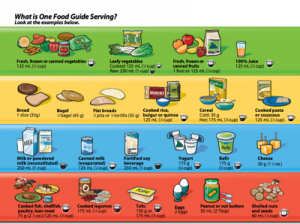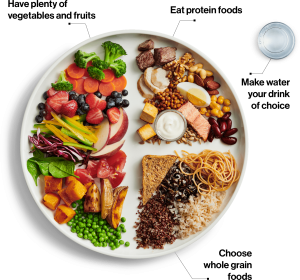Much has changed during the pandemic. The new normal so many hoped would be temporary continues to have massive effects on every aspect of life. With even more on your plate as a health care professional, it’s critical that you take care of yourself and your family as well as your patients.
This series looks at how to keep things healthy and happy at home – starting with the simple subject of food.
Many are doing less grocery shopping or have been forced to cut back on their typical food budget because of the economic impact of COVID-19. Yet home cooking is more common because of the risks and expense of eating out. Not to mention indoor dining restrictions and closures.
Finding ways to stretch the budget while keeping the family healthy and happy is as important as ever. Food can bring comfort in stressful times, and proper eating is a vital part of maintaining your mental and physical health – especially for members of your family that fall into the senior population.
Canadian health care bodies offer great online resources and even recipes for healthy eating suggestions. But just following some of the basics from Canada’s Food Guide provides a good foundation for what to focus on when it comes to prioritizing dollars for dining.
A few healthy food tips from the guide include:
- Have plenty of vegetables and fruits
- Try to fill a quarter of your plate with protein foods (such as eggs, lean meats and poultry, nuts and seeds, fish and shellfish, lower fat dairy products, beans, peas and lentils, fortified soy beverages, tofu, soybeans and other soy products).
- Make water your drink of choice
- Choose whole grain foods. The less processed, the better
On the mental side of your relationship with food, the guide suggests:
- Being mindful of your eating habits
- Cooking at home
- Eating with others (safely of course – inside-the-bubble dinner guests only!)
- Limiting food high in salt, sugar and saturated fat
- Reading food labels
As my grandmother said, “Don’t buy any white food”, referring to white rice, white sugar and white flour.
As a busy health care professional, your tendency might be to skip meals or snack on whatever is at hand whenever a few minutes presents an opportunity. While your time with your patients is important, you still need to look after yourself. Rather than skipping healthy meals to save time, try delegating some of your tasks. For example, consider outsourcing your patient document to a medical transcription service. Use a team of experienced transcriptionists, editors, quality assurance managers and customer service representatives to transcribe and return your dictations with rapid, secure and compliant delivery.
If your practice’s bottom line has been affected by the pandemic, the basics of healthy eating remain the same even with a reduced budget. It may be harder to decide what and how much you can purchase when you shop but remember that meals don’t have to be extravagant and lavish to taste great and provide the nutrients you need. Keep the expectations in check and plan all your meals a week in advance. Or try a meal service that delivers.
 And consider using the good china and silver at least once a week, along with candles and linen napkins for a more ‘luxurious’ experience, just like dining out!
And consider using the good china and silver at least once a week, along with candles and linen napkins for a more ‘luxurious’ experience, just like dining out!
Meal planning provides a streamlined grocery list and reduces the chances of over-spending. And making extra for leftovers can be used to supplement lunches. Avoiding spoilage and food waste is key to getting bang for your buck. And if vegetables are wilted, you can use them and any veggie waste from your prep to make simple stocks and soups.
Also, if you’re working from home some days, these are good times to think about foods that take time to make, such as baking bread or slow cooking recipes.
A healthy grocery list can offer ideas for making smart decisions, and ideas for spending less include meatless meals, or buying value packs of meat and freezing portions, as well as considering no-name brands and looking for store specials and coupons.
And as my mother said, “Don’t shop on an empty stomach!”.
Up next: Keeping kids growing in isolation

